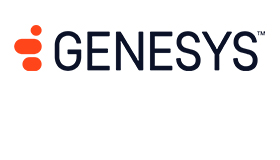Merijn te Booij at Genesys explains why WEM is the cornerstone of efficiency and employee engagement.
At a time when employee retention is more tenuous than ever, companies need technology that goes beyond optimizing agent efficiency. They need tools that improve agent engagement by providing all the content and context necessary to deliver empathetic customer experiences.
Two organizations — Company Nurse and Twiddy & Company — know firsthand the benefits of adopting workforce engagement management (WEM) to do just that.
During the Xperience 2022 session “Workforce engagement: Creating the Autobahn of efficiency,” Cherri Lindquist, Clinic Director of Nursing at Company Nurse, which provides nurse triage services for when an employee gets injured at work; and Blake Stockslager, CIO of Twiddy & Company, a property management and vacation rental company in the Outer Banks of North Carolina, spoke with Robert Beasley, Global Director of Strategic Solutions at Genesys about their use of WEM.
No More Spreadsheets for Contact Centre Management
As with many contact centres, both companies used spreadsheets for contact centre management. For Lindquist, that meant the chore of manually scheduling agents located across different time zones in the US, Philippines and Honduras.
Similarly, Stockslager’s colleagues used spreadsheets to schedule Twiddy & Company’s NC-based agents. The process was inefficient and lacked flexibility. The company needed to find a better way.
Since moving to a WEM solution Lindquist has decreased her time to create a schedule by about 85% — just a fraction of the time it used to take. And because the scheduling application is cloud-based and intuitive to use, she can share those duties with others if she’s out of the office.
The system benefits agents, too. For example, they receive pop-up notifications when they can go on break, so they can focus on taking care of the interaction at hand rather than watching the clock to try to stay in adherence.
They can also easily see schedules, so they know who’s out and when others are on breaks, so unplanned breaks don’t affect service levels.
It has also helped with providing a ton of new metrics and ways to view the data, so supervisors and operations staff now know exactly where they are metrics-wise.
Company Nurse now has visibility into all the areas it grades performance. In the past, Lindquist would have to send an email with the numbers.
Before implementing WEM, Twiddy & Company would have a supervisor spend three to four days in Excel trying to work out which agents would be in which roles doing which tasks. And they had to schedule all the breaks in this same spreadsheet.
“It was time-consuming and archaic,” he said, adding that this entire process now takes about five minutes and is much less prone to human error.
The agents appreciate it, too. It gives them better visibility into their biweekly schedules, and they can use the web console or the mobile app to easily do a shift change. Employees get nearly instant feedback that allows them to get back to their day knowing their schedule is set.
Plus, if someone needs to make a change to the schedule — either last-minute or a day or two out — it doesn’t burden the supervising staff with how they’ll accommodate that person and still meet all SLAs and metrics.
Easing Into Change With WEM
Company Nurse has been using WEM for about four years; Twiddy & Company has been using it about two years. But they both took a measured approach to rolling it out.
Twiddy & Company started slowly, Stockslager said, beginning with workforce management (WFM) to get schedules correct. Then the company added in coaching and performance management.
Lindquist said Company Nurse had a bit of a learning curve tech-wise when it first implemented WEM. There was some initial resistance from the staff. “But now they couldn’t imagine their lives without it,” she said.
Today, Company Nurse uses just about everything the WFM scheduling application can do, Lindquist noted, adding that the automated best-method forecasting has been a real timesaver.
The ability to schedule using workplan rotations has been a tremendous win for Lindquist, who used to do that manually.
When new features are released, the IT team takes the lead if there’s anything that needs to be turned on or off permissions-wise. But usually, Linquist and her team can implement all new features without IT.
Measures of Contact Centre Success
Although Company Nurse uses typical contact centre metrics — including average speed of answer, talk time, hold time and transferring — its contact centre leaders look at quality through five different assessment forms for the nursing staff.
Quality assessments might be a client review, a standard review to make sure things were done correctly or the medical director looking for something specific.
“It’s important to make sure we’re analyzing the right things… [and] that, if there’s a training need, we’re able to identify it,” said Lindquist.
Twiddy & Company also tracks common contact centre metrics, including average speed of answer, talk time and abandon rates.
Stockslager explained the company uses that data, along with call recordings and coaching, to determine how it will staff the contact centre and what staff is needed at specific times to ensure each call has a great customer experience.
“Our business is very seasonal. So, what time of the year it is will determine what kinds of calls we’re getting and the various queues we have,” said Stockslager.
With employee retention top of mind for every company, there’s never been a better time to discover all the ways WEM can help drive employee engagement — from giving agents more control over their schedules to making work more fun. And if it makes your job easier too, that’s a win for everyone.
This blog post has been re-published by kind permission of Genesys – View the Original Article
For more information about Genesys - visit the Genesys Website
Call Centre Helper is not responsible for the content of these guest blog posts. The opinions expressed in this article are those of the author, and do not necessarily reflect those of Call Centre Helper.
Author: Genesys
Published On: 11th Jul 2022 - Last modified: 12th Jul 2022
Read more about - Guest Blogs, Genesys






 Genesys empowers more than 8,000 organisations in over 100 countries to improve loyalty and business outcomes by creating the best experiences for their customers and employees. Through Genesys Cloud, the AI-Powered Experience Orchestration platform, Genesys delivers the future of CX to organisations of all sizes so they can provide empathetic, personalised experience at scale. As the trusted platform that is born in the cloud, Genesys Cloud helps organisations accelerate growth by enabling them to differentiate with the right customer experience at the right time, while driving stronger workforce engagement, efficiency and operational improvements.
Genesys empowers more than 8,000 organisations in over 100 countries to improve loyalty and business outcomes by creating the best experiences for their customers and employees. Through Genesys Cloud, the AI-Powered Experience Orchestration platform, Genesys delivers the future of CX to organisations of all sizes so they can provide empathetic, personalised experience at scale. As the trusted platform that is born in the cloud, Genesys Cloud helps organisations accelerate growth by enabling them to differentiate with the right customer experience at the right time, while driving stronger workforce engagement, efficiency and operational improvements. 











